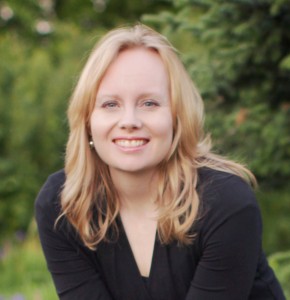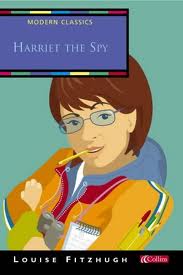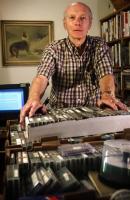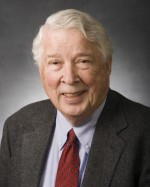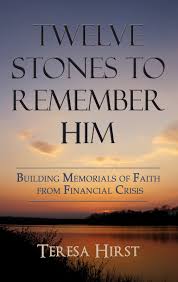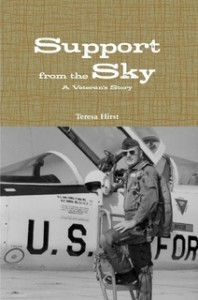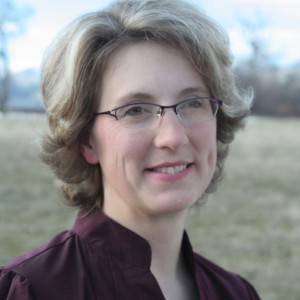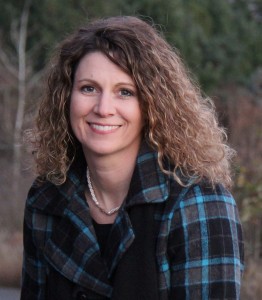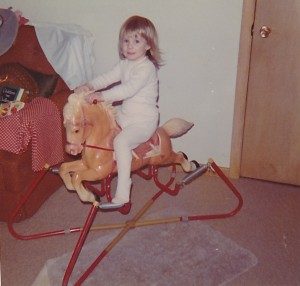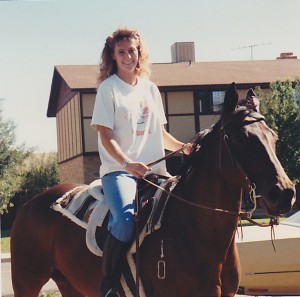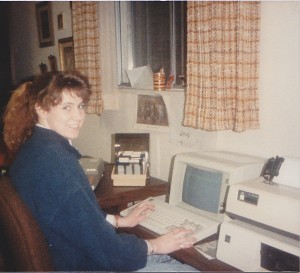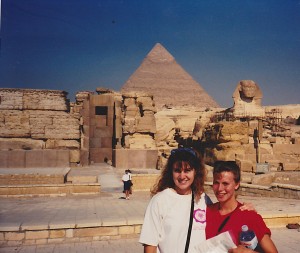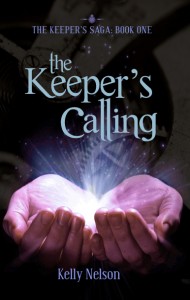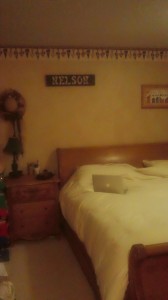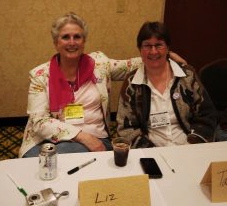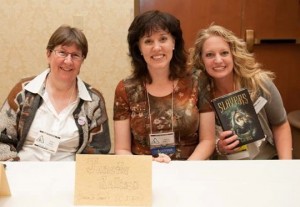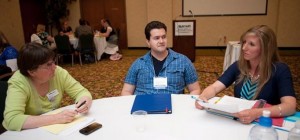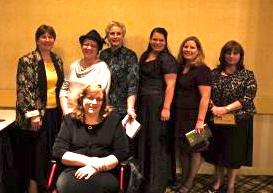It’s nice to be able to interview an author of non-fiction now and then, and I’m very excited to share what I’ve learned about inspirational writer, Teresa Hirst, today. She recently wrote and published a book on using financial crises to build faith, based on the experiences of her own family.
(Photo of Teresa, courtesy of Tammie Olson Photography)
ME: You talk about having had a Harriet the Spy persona as you grew up in the Midwest. Would you care to elaborate, and what was it about the Midwest that brought that side out of you? (I’d like to post a photo of you as a child, preferably in Harriet the Spy mode.)
TERESA: I spent the summers of my childhood in St. Charles, Missouri, where this town on the outskirts of St. Louis hadn’t yet exploded into suburbia. I spent my pre-teen summers reading my weekly load of 10-20 books (including Harriet the Spy by Louise Fitzhugh) from the library or scouring the neighborhood or the woods behind our house for adventure.
My sister and I broke up the monotony of summer days with our own versions of spying on the neighbors in their yards from the best vantage points in our garage. We even marked the spot with a piece of tape. We loved watching how other families and friends lived, although always from a distance. Unlike Harriet, these “characters” didn’t show up in my notebooks or stories, only in an unforgettable nightmare in which one neighbor chased me into the woods with a baker’s hat on his head. (How funny! :D)
My interest in people expanded into a more refined hobby when I discovered how to have conversations from reading an old copy of How to Win Friends and Influence People by Dale Carnegie from my parents’ bookshelf.
(I remember that one . . . required reading for all Communications majors at BYU)
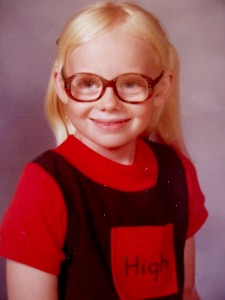 (And here’s Teresa in 2nd Grade…what a cutie!)
(And here’s Teresa in 2nd Grade…what a cutie!)
ME: Did anything happen to you in your childhood that helped prepare you for the unexpected financial struggle you and your husband faced years later that you address in your inspirational book, TWELVE STONES TO REMEMBER HIM?
TERESA: In my teen years, we moved closer into the west county suburbs of St. Louis. As a large Mormon family living a frugal lifestyle in the middle of a well-off community, I always felt like the outsider. We didn’t have a cleaning lady or expensive clothes like our friends.
In a teenage reaction to that, I spent a lot of time imagining what my future would look like in a material sense.
When my husband was in architecture school and we didn’t have any money, I did laundry at my mom’s and grilled her about how to live frugally and still live well. Our dreams then were planning the house we would build for our family someday. As we matured as a family, we carefully chose material and physical surroundings to enhance who we were—our Finnish and Danish heritage, our faith and our design aesthetic. Eventually we built a home that was thoroughly us.
To be able to afford to do this, we still lived providentially on the lessons I learned from my parents and didn’t spend frivolously. However, when the economy fell, our industry and community fell further than others. As a result, I had to slowly let go of all the material things that I thought defined who we were. The last of those was our home.
It seems obvious to say that our material things—even basics like clothes, transportation, shelter—do not define us, but that’s not the message we receive from the world or even people who surround us. And since my teenage years I’ve wrestled with that conflict. On this side of the financial crisis, though, I have a different perspective.
(If you’re interested, Teresa has written a post about what a home meant to her, entitled “Building Our Souvenir Home.”)
ME: You must have felt you could write by the time you got through high school, since you went on to major in Journalism at BYU. When did you first recognize your ability with words, what made you recognize it, and who helped you to realize it?
TERESA: I wrote a lot in high school, but it was mostly sappy poetry that seemed at the time to have great metaphorical depth and meaning. (I think we’ve all been there. :D)
When I started college I actually planned to pursue my creativity with an advertising emphasis in the communications department at BYU. After my first year, when I discovered I had more passion for people than products, I shifted toward journalism to pursue a more writing-focused emphasis.
I had two memorable professors at BYU whose lessons have stayed with me.
Don Norton in the English Department nurtured usage and writing skills of all sorts and taught me how to apply them to different types of writing and communication, including personal essays.
John Hughes in the Communications Department, a gifted professional editor and journalist who taught an advanced reporting class, gave me a vision of the larger world, which expanded the issues and topics of my writing. He chose me to be a group leader in that class, and his confidence in my skills helped me rise to that and other opportunities.
Today my husband Paul, more than anyone, propels me to develop, and encourages me in my writing.
(I’ll show a picture of him in a bit.)
ME: So, once you graduated from BYU and were married, did you keep writing or did you put it on the back burner while raising your kids? Tell us about those years and how you kept your gift alive. (I’d love to post a picture of you and your family.)
TERESA: I graduated from BYU in 1994 when I was 38 weeks pregnant with my first child. I loved being a mom, and turned to reading and writing personal history as a hobby that first year. After that, I took on some freelance editing and writing projects on a very limited basis—some paid, some volunteer work.
After my third child was a year old, I moved out of my mom-only world and applied and was appointed to the newspaper advisory board for our local daily newspaper. In that role, my opinions developed, and I contributed some editorial writing to the newspaper. Meanwhile, I applied my writing skills to every responsibility I had at church and always seemed to be in charge of producing a newsletter. (Yes, they discover us pretty quickly, don’t they?)
In January 2008, when all my children where busy in school, I started blogging regularly and redeveloped my professional writing skills through a number of biographical interviews that I published in various places. Two years later, I was assigned to LDS public affairs for our stake and have written a large number of news releases or articles for that responsibility. (Another experience we share.)
I did work full-time for a newspaper for two years as a result of the recession. Rather than writing there, I worked in a public relations role to organize and promote the newspapers in education program.
At home I’ve always had a workstation set apart for my writing projects. When my children were little, I set up my desk right at the edge of their playroom. As school-age children, they had desks in a U-shape around mine. Now, as they are leaving the nest and the youngest ones are in high school, I’m still physically present as I write from home. When they are off doing their homework, socializing or working, writing is what I’m doing. When they are around, I can and do make myself available. I love that about working from home.
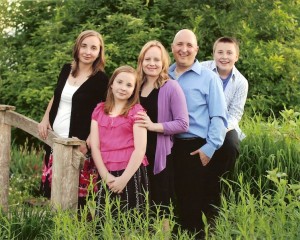 (Hirst Family by Tammie Olson Photography)
(Hirst Family by Tammie Olson Photography)
ME: Please tell us the story behind your first non-fiction book, TWELVE STONES TO REMEMBER HIM: BUILDING MEMORIALS OF FAITH FROM FINANCIAL CRISIS. And how difficult was it to find a publisher?
TERESA: I came across this story when I was teaching an early morning seminary class for the Church. The Lord commanded the children of Israel to build a memorial of twelve stones after they crossed the Jordan River. It was a physical reminder to them and their children that God sustained and protected them on their journey. His hand was over them.
The idea of applying this Bible story of the twelve stone memorial to modern day germinated in me for more than a year before I really knew where I wanted to take it. I wanted to do something about modern memorials as testaments of God, but I wasn’t sure what that meant. I heard a woman share her story of feeding a homeless man at McDonald’s even when they were trying to save money themselves. I recognized that, like me, others were trying to find faith-filled ways to cope with less during the recession. I realized that He was also sustaining us, like he had the children of Israel, as we applied our faith and trusted in Him. What did that mean and what did it look like?
(Here’s a link to a blog post she titled “Why Memorials?”)
It is always challenging to find a traditional publisher. But when you have an LDS-focused work and something that is pretty time-specific, like this was to coincide with the Old Testament being taught in gospel doctrine in 2014, it is more of a challenge. My publisher, Walnut Springs Press, was actually reviewing a piece of fiction and asked if I had any non-fiction. I did, and we switched gears and focused on that.
ME: Have you written and published other inspirational stories? If so, please tell us about them.
TERESA: I published a short book about my father, David Jensen, serving in the Air Force during the Vietnam War and receiving the Distinguished Flying Cross. It’s available on Lulu.
I wrote a series of blog posts based on interviews with Vicki Carlson, wife of Elder Bruce A. Carlson of the Second Quorum of the Seventy, when he was approaching retirement as an Air Force Four-Star General.
I wrote two articles for the LDS Church News, one about Elder Carlson’s retirement from the Air Force and one about the first LDS humanitarian missionaries in Macedonia and Kosovo.
Most everything I write at my blog, Illuminate Everyday, would be considered inspirational. A couple of my favorites are “Filling in the Blank” and “Five Things I Love About Motherhood.”
ME: Are you intent on sticking with non-fiction, or do you foresee a time when you might give fiction a try, and why or why not?
TERESA: I actually wrote a novel before I wrote Twelve Stones to Remember Him, but the timing of publication for the nonfiction was more pressing. The novel is general women’s fiction and is called Flowers of Grace. I’m working through the publication process on that right now. (Terrific!)
ME: Please describe the writing process you followed when you wrote TWELVE STONES TO REMEMBER HIM.
TERESA: I began looking for stories of faith from the recession. I used my blog and social media to invite participation and sent to my contacts, seeking individuals they might know who would participate. I conducted the interviews throughout 2012.
An interview consisted of setting up an in-person or Skype interview, and conducting and recording the 60- to 90- minute interview. After the interview, I transcribed exactly what was said by both of us.
After the ninth or tenth interview, toward the end of the year, I saw patterns and common themes developing. I set up the last two interviews for the end of November and began grouping material with like topics—trust in God, gratitude, and patience—together. These and other topics became the twelve common stones of a representative memorial of faith that God had upheld, sustained, and strengthened these individuals despite their financial challenge.
At this point, I wove my own story into these, added scriptures and words of church leaders, wrote transitions and drew conclusions. I then wrote the introductory material to set the premise for the story of the twelve stones memorial, why we build memorials and how they can help our faith today.
Finally, I developed the concluding section as a way to apply these stories and show how a pattern of memorial building can help us through any trial or challenge. It’s a process to recognize God’s hand in our lives, receive from Him and others with gratitude, and recall these “memorials of faith” in times of need. I learned as I went along that, indeed, coming to know He is with us in our darkest hour and then drawing upon that knowledge is the key to always remembering Him.
ME: What are you working on now, and what ideas do you plan to pursue for the future when it comes to writing?
TERESA: I am working on a non-fiction LDS Christmas book and a sequel to Flowers of Grace.
ME: Please describe your writing space and list the five things about it that make it unique to you. (And I must have a picture of your office or space.)
TERESA: I have an office space in our sunroom, just off the kitchen and dining room that is my home base. Five things that make it unique to me:
- Two of my children still live at home, and their desks connect to mine.
- Windows surround my space, giving me constant light. We live in Minnesota, and light is precious to me because I never seem to get enough of it.
- I have a favorite hibiscus plant on my desk that is special to me. Another hibiscus inspired my novel, and this one was a gift to my sister that I’m tending while she is living in Australia. (Here’s a blog post titled, “The Plant that inspired my Novel.”)
- It’s pretty clean and organized because I can’t think if it isn’t. I organize each project in a binder with physical research, notes, ideas and drafts. So I just pull open the binder for that project and go to work.
- This place is flexible. When I get cold or want a change, I can move. I switched to a laptop last year and even ditched a monitor, so I have the flexibility to leave that space according to my mood. My back-up workspace, especially on cold winter days, is the living room couch with a cozy blanket and my feet up on the ottoman.
(It certainly looks well organized, doesn’t it?)
If you want to know more about Teresa, check out her website. Her book is available on Amazon, Barnes and Noble, and Deseret Book.
Next Wednesday, I’ll be chatting with Kate Palmer, author of THE GUY NEXT DOOR.
Originally posted 2014-04-16 06:00:28.

